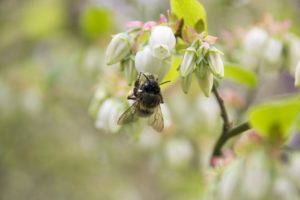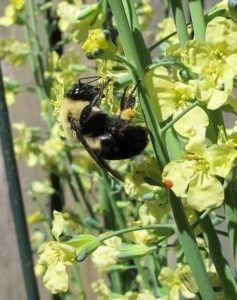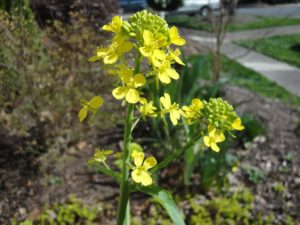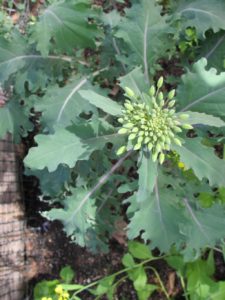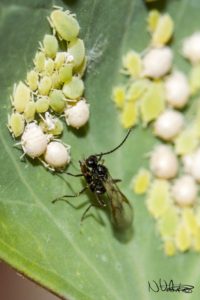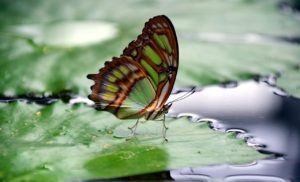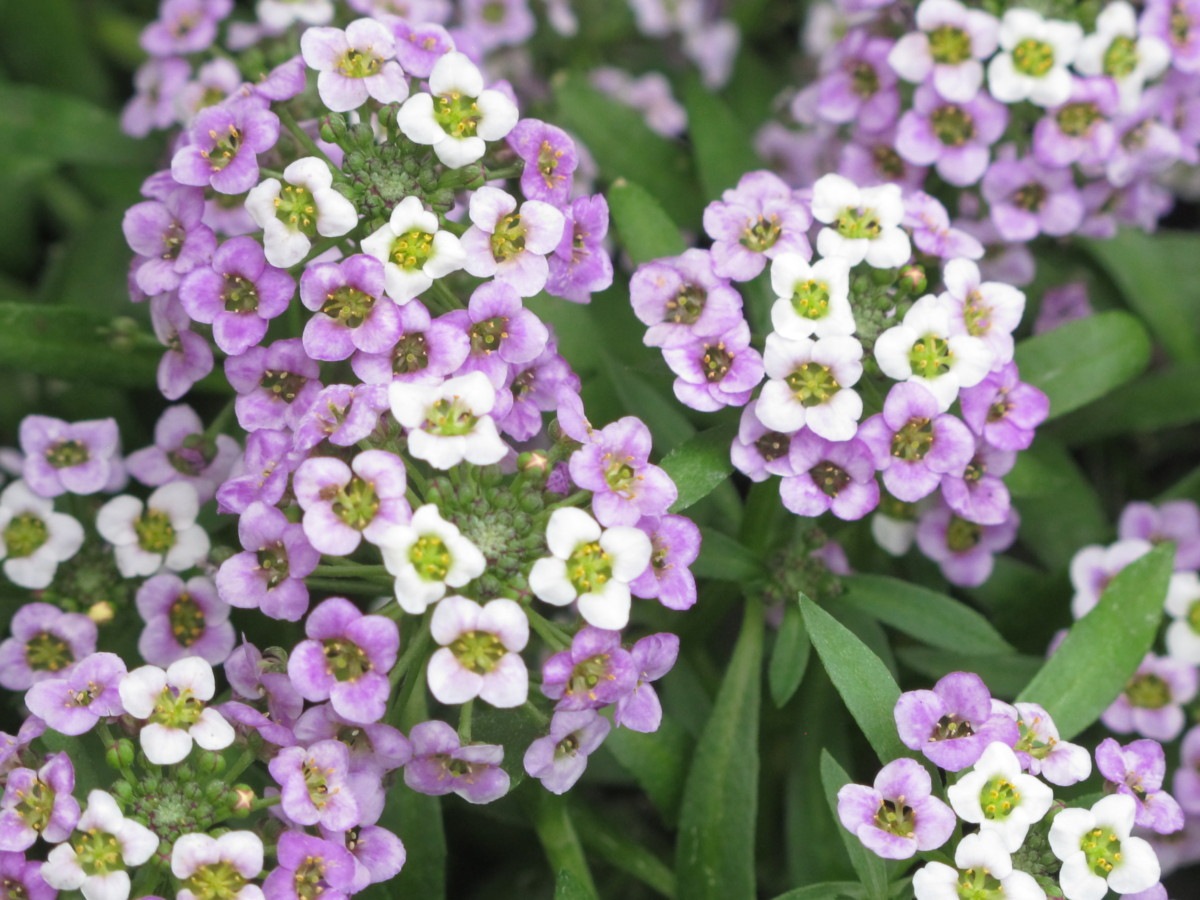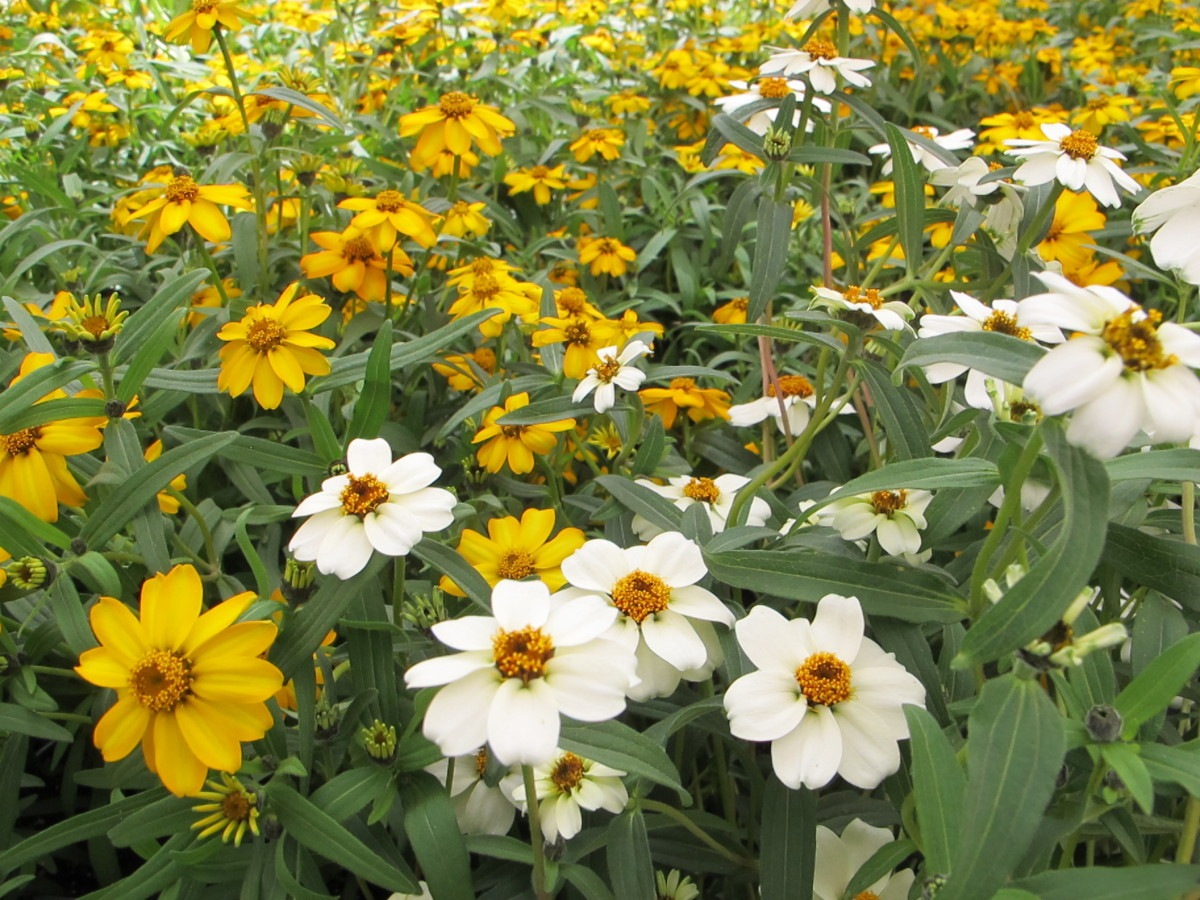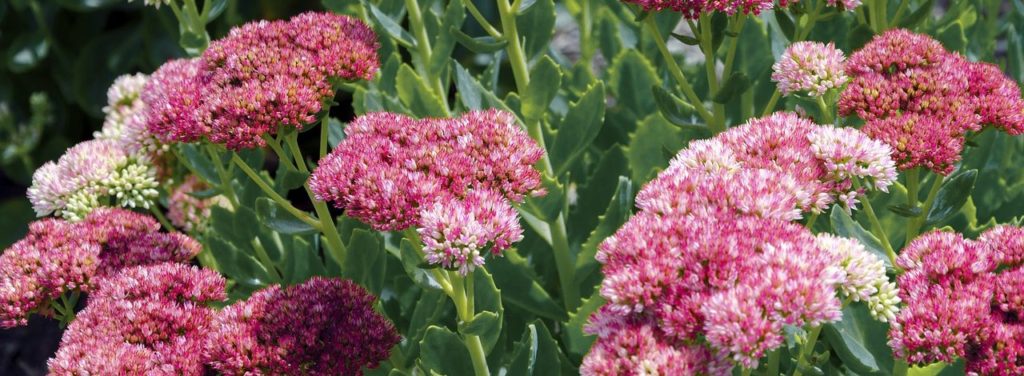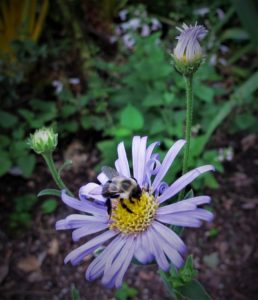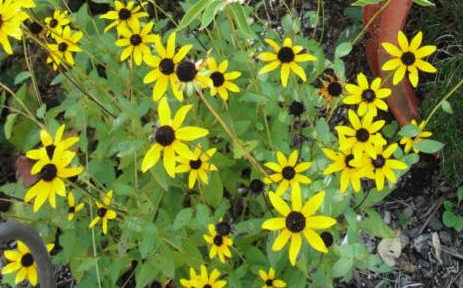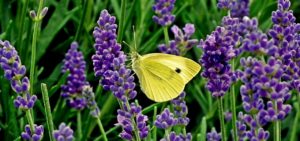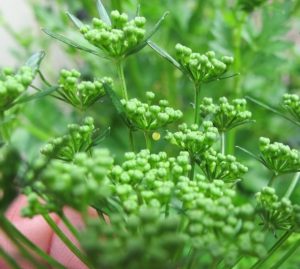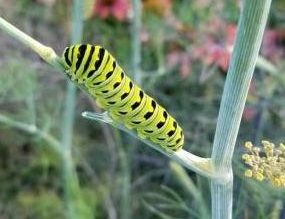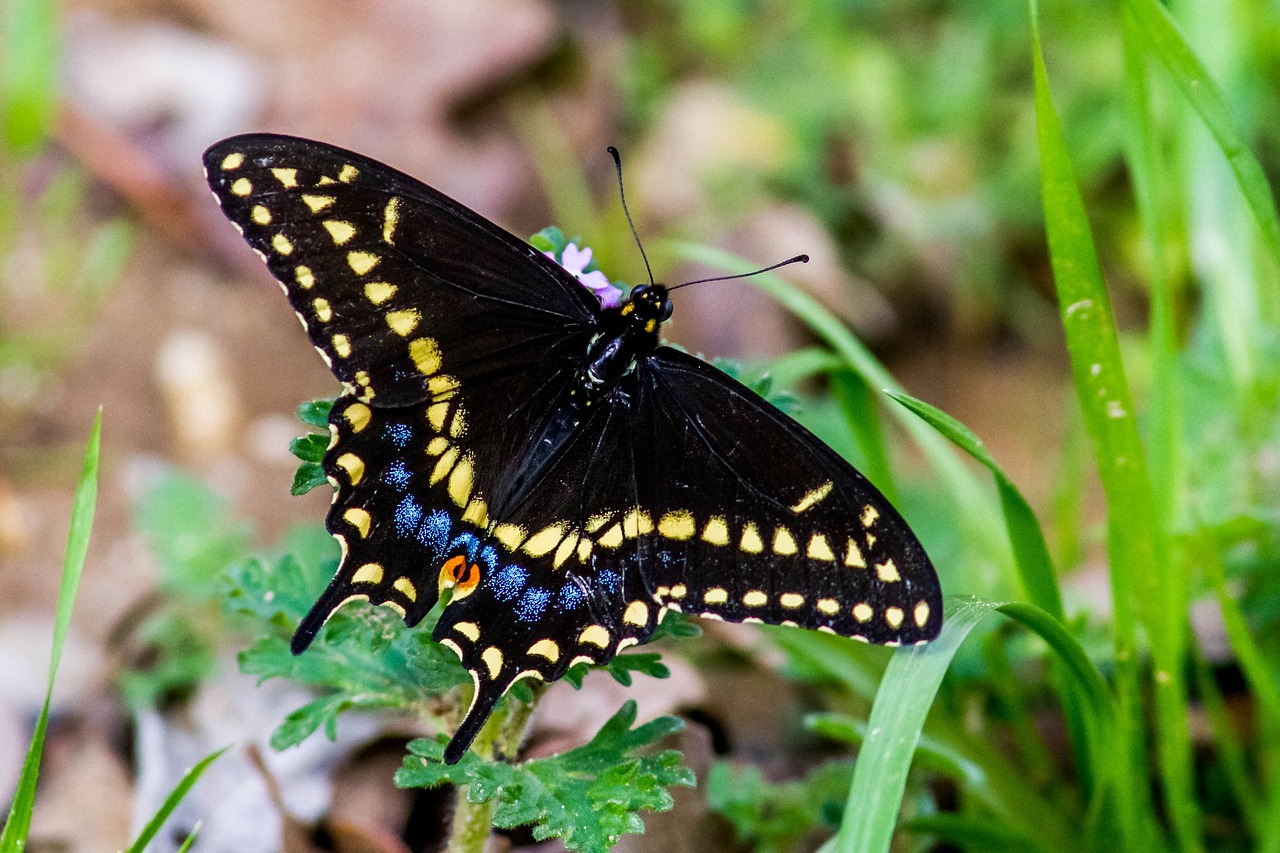Page 2
Added Benefits
Vegetables and Fruits
Insects and hummingbirds are on a constant lookout for sources of pollen and nectar. You might discover your fruit trees, blueberries, and vegetable crops yielding heavier harvests since installing flower gardens.
Edible crops and plants growing naturally in or around your property will benefit from complete pollination because of the larger populations of pollinators. Include plants whose flowers attract pollinators in every month of the year, if your climate allows it.
- Bumble bee visiting broccoli flowers.
- Flowers on mustard greens. This edible plant readily self-seeds.
- Red Russian kale in bud.
I grow many kinds of greens (photos, above) in the cool seasons—even in winter. Before they’re replaced with summer crops, I allow them to go to flower in late winter to early spring. Most are biennials in the Brassicaceae family, including kale, collards, broccoli, arugula, and mustard greens. Although they don’t require pollination for a harvest, the cruciferous flowers provide pollen and nectar for bees, braconid wasps, hover flies, and other pollinators at the time of year when little else is available.
Pansies and violas provide sustenance for bees that emerge on pleasant winter days. These colorful cold-tolerant biennials grow in garden beds and in containers.
Braconid Wasps
Tiny non-stinging braconid wasps are hardly noticeable, but they help keep populations of live-bearing aphids in check. A female braconid wasp deposits an egg in an aphid. After hatching, the wasp larva consumes the tissues, killing the aphid. One braconid wasp can parasitize 200 aphids in her brief lifetime. Adults emerge to mate, and a new generation of females will begin hunting aphids.
Pollen is an important food source for the braconid wasps, which feed on some aphids as well. So, even these tiny insects help pollinate plants.
Photo at right shows a wasp about to deposit some eggs. White aphids have been parasitized, and the others are alive. I’ve often seen leaves with a hundred aphid mummies (the aphid’s empty exoskeleton) attached, with no living aphids.
Planting a wide variety of flowers helps these beneficial insects. Self sustaining populations of beneficials contribute to the overall health of your garden, reducing or eliminating the need for pesticides.
For the Birds
Let’s not forget about the birds! Although most species, other than hummingbirds, don’t play a major role in pollinating plants, songbirds certainly have a place in any natural ecosystem. We can play an important part, in our own yards, by maintaining an environment that fosters healthy populations of native animals.
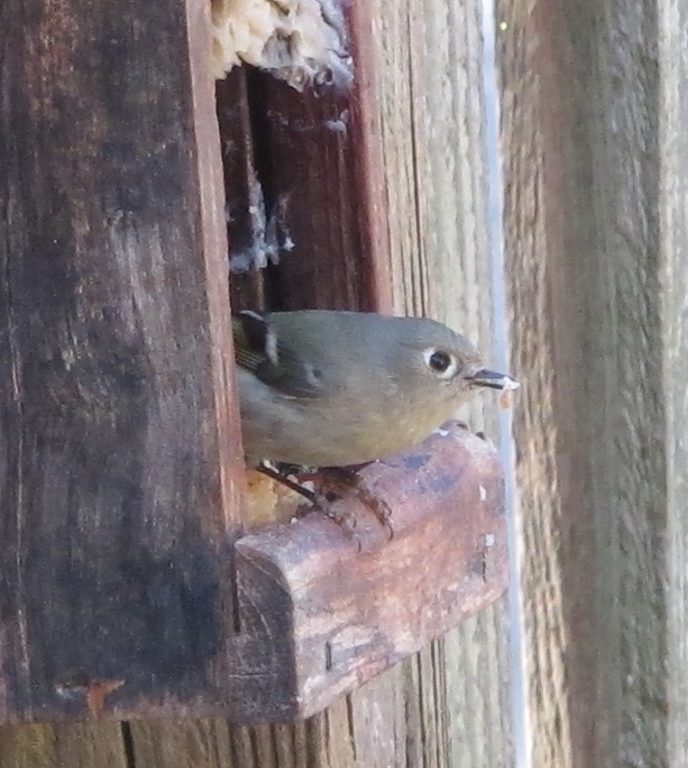
The tiny ruby-crowned kinglet at a winter feeder.
The numbers of many species of birds are declining, due primarily to human interference. We’ve removed their habitat in favor of expansive lawns and non-native trees and shrubs. And we’ve killed off their food sources by spraying pesticides every time a “bug” shows up. Can we please adopt a new attitude?
After all, birds help by consuming huge numbers of insect pests that otherwise could destroy crops or damage potted plants. Birds and bats keep mosquitoes and moths in check. More insects in the garden supports more avian activity.
Restoring healthy populations of all native animals and insects returns balance to the ecosystem. Sometimes, though, the songbirds fall prey to foxes, snakes, or hawks. Predator and prey: yes, folks, that’s how it works.
There are many benefits to living in modern society, but loss of habitat for wild creatures is not one of them. Letting nature be is a crucial step in re-establishing native populations and preventing extinctions.
Let ‘Em Seed About
Finches, sparrows, and chickadees feast on seeds that develop after the flowers fade. So, don’t be too hasty to deadhead the last round of flowers. Allow them to remain in place through the fall and winter, so the birds have another food source available when they need it. Birds will soon recognize your property as a wellspring of year-round sustenance.
Bright yellow and black American goldfinches are fond of zinnias, cosmos, salvias, and asters that have gone to seed. In late summer and autumn, the finches, northern cardinals, thrashers, blue jays, and other animals eagerly consume seeds atop the black-eyed Susans and tall sunflowers. And you might notice plants germinating next spring from seeds the birds overlooked.
Water
Include a source of clean water for the birds. A birdbath in the garden is fine, or you could keep a large plant saucer on the deck. Change the water at least every 2-3 days to prevent mosquito wrigglers from reaching adulthood.
Bees and butterflies also appreciate a source of water on a hot summer day. Place a flat rock island in the water for safe sipping. A mud puddle, just a bare patch of wet sandy clay, provides moisture and minerals for butterflies.
Small songbirds and the bees have found the shallow plant saucers filled with water tucked among the plants on the deck—safe from roaming cats. Since moving (in 2021) to this property in rural North Carolina, every day brings new delights.
Cut Flowers
Another benefit of growing a garden of annuals is the steady supply of cut flowers for indoor arrangements. Include plans to expand the garden next year, to keep the pollinators happy, too. Check with your agricultural extension service or the florist at the local farmers’ market to see which flowers last longest in a vase.
Try Some Of These for the Bees and Butterflies
Ageratum, alyssum, bachelor’s button, cleome, cosmos, fuchsia (hummingbirds), herbs, impatiens, lantana, marigold, and pentas. Rudbeckia (annual and perennial varieties of black-eyed Susan), salvia (annual and perennial types, a hummingbird favorite), some of the sunflowers, tithonia, verbena, and zinnia.
- Sweet alyssum.
- Cosmos.
- Zinnia angustifolia ‘Star’ series, disease resistant.
Perennial Favorites for Bees and Butterflies
If the idea of not replanting the entire bed each year appeals to you, then consider using perennials. Those species that bloom for relatively long periods of time will receive lots of attention from bees and butterflies.
A bold backdrop of the tall Joe Pye weed (formerly Eupatorium, now Eutrochium) and several garden phlox (powdery mildew resistant varieties) will entice the pollinators. Add a sinuous drift of black-eyed Susans; Rudbeckia fulgida v. fulgida blooms for a longer period than ‘Goldsturm’. Also, coreopsis, coneflowers (Echinacea purpurea), butterfly bush (non-invasive cultivars of Buddleia), and perennial asters (such as ‘Monch’ and ‘Purple Dome’).
Plant several clumps of sedum (Sedum telephium ‘Autumn Joy’ or ‘Matrona’, for example) toward the front. These drought tolerant succulents bloom later, providing color from midsummer into early autumn. The birds will feed on seedpods left standing after bloom. Birds might also take triangular bites from the leaf margins, for moisture and minerals. Deer take much bigger bites.
Larger species of sedum behave better if you cut the plant halfway to the ground once the plant has reached about 1′ tall, in mid spring. The remaining stems will branch out, giving more flowers later. Denser growth helps prevent the plant from splaying open from its own weight. This procedure works well with tall, late blooming perennials.
Permanent Residents
The perennials mentioned above grow larger than most annuals, so plan on removing even more of the grass. (“No problem!”). Plant according to their mature size to avoid having to fuss over them later. Planted too closely, perennials become susceptible to diseases, and crowding won’t enhance their flowering.
Over the years, you’ll need to divide some of the old clumps. But the flowering will be impressive, and the bees and butterflies ever grateful!
More Perennials
Baptisia, Buddleia (butterfly bush), clover, columbine (Aquilegia), coral bells (Heuchera species), coral honeysuckle vine (Lonicera sempervirens), Caryopteris, foxglove (Digitalis, a biennial). Goldenrod (Solidago), Helianthus, Liatris, milkweed (Asclepias), Monarda, passionflower vine (Passiflora), Salvia ‘Black and Bloom’, yarrow, and hundreds more.
Lavender
In order to grow lavender successfully, it’s critical to do proper soil preparation. It must be gritty and drain fast. And the site must receive full sun, at least 8 hours each day. Lavender also demands excellent air circulation, so plant this Mediterranean native out in the open, with nothing hovering over or near it.
Lavender can grow in clay soil, after ample amendments have been incorporated. This involves re-working the root zone, but if you’re determined to have lavender (pollinators love it), that is where you start.
When planting lavender, I aim for about one-third of the root zone to be composed of drainage materials, such as pine fines, horticultural grit, coarse sand, and small gravel. Incorporate those materials 12-18″ into the existing soil; don’t layer them. Avoid wetting the foliage.
If your conditions are less than perfect, try a few of the more durable varieties, such as ‘Phenomenal’, ‘Munstead’, or ‘Provence’. Learn how to propagate lavender in order to economically expand the lavender garden. Check with local experts or the agricultural extension service for variety recommendations in your region.
Herbs
The Apiaceae Family
Parsley (biennial), cilantro (annual), bronze fennel (perennial), wild carrot (easy but invasive annual Queen Anne’s lace), and dill (annual) flowers provide pollen and nectar for the pollinators.
The black swallowtail butterfly lays eggs on these members of the Apiaceae family, and the caterpillars feed on the foliage. When mature, the caterpillar crawls off to a protected place to pupate in a chrysalis, later emerging as an adult or overwintering in garden debris.
- Black swallowtail larva.
- Black swallowtail butterfly.
The Lamiaceae Family
Herbs in the Lamiaceae family attract pollinators. Bees and butterflies, moths and flies will flock to mint, monarda, basil (annual), sage, thyme, rosemary, lavender, catnip, oregano, marjoram, and lemon balm when they’re in flower.
Some of these can be very invasive, so consider carefully whether you wish to unleash them in your back yard. Restraining them, especially the mints, to the confines of a large pot is advised.
Headings
Page 1: National Pollinator Week, What Bees and Butterflies Need (The Missing Elements), A Garden of Annuals for Bees and Butterflies (What Is An Annual?, What Do Pollinators Do?, Cross Pollination, Single? Double? Or Triple Flowers?, Sunflowers, Where To Plant?, Sun or Shade?, How Big Is Big?, In One of My Gardens, Container Gardens)
Page 2: Added Benefits (Vegetables and Fruits, Braconid Wasps, For the Birds, Let ‘Em Seed About, Water, Cut Flowers, Try Some of These for the Bees and Butterflies), Perennial Favorites for Bees and Butterflies (Permanent Residents, More Perennials, Lavender, Herbs, The Apiaceae Family, The Lamiaceae Family)
Page 3: Brush Piles for Pollinators (Go Native), A Comprehensive Garden Plan (Dream, Plan, and Implement, On the Right Path, Stone, Diversify, Some Native Woody Plants, Asking for Help, Check With Local Sources, Dig In!, More Considerations, Small Is Beautiful), Links
